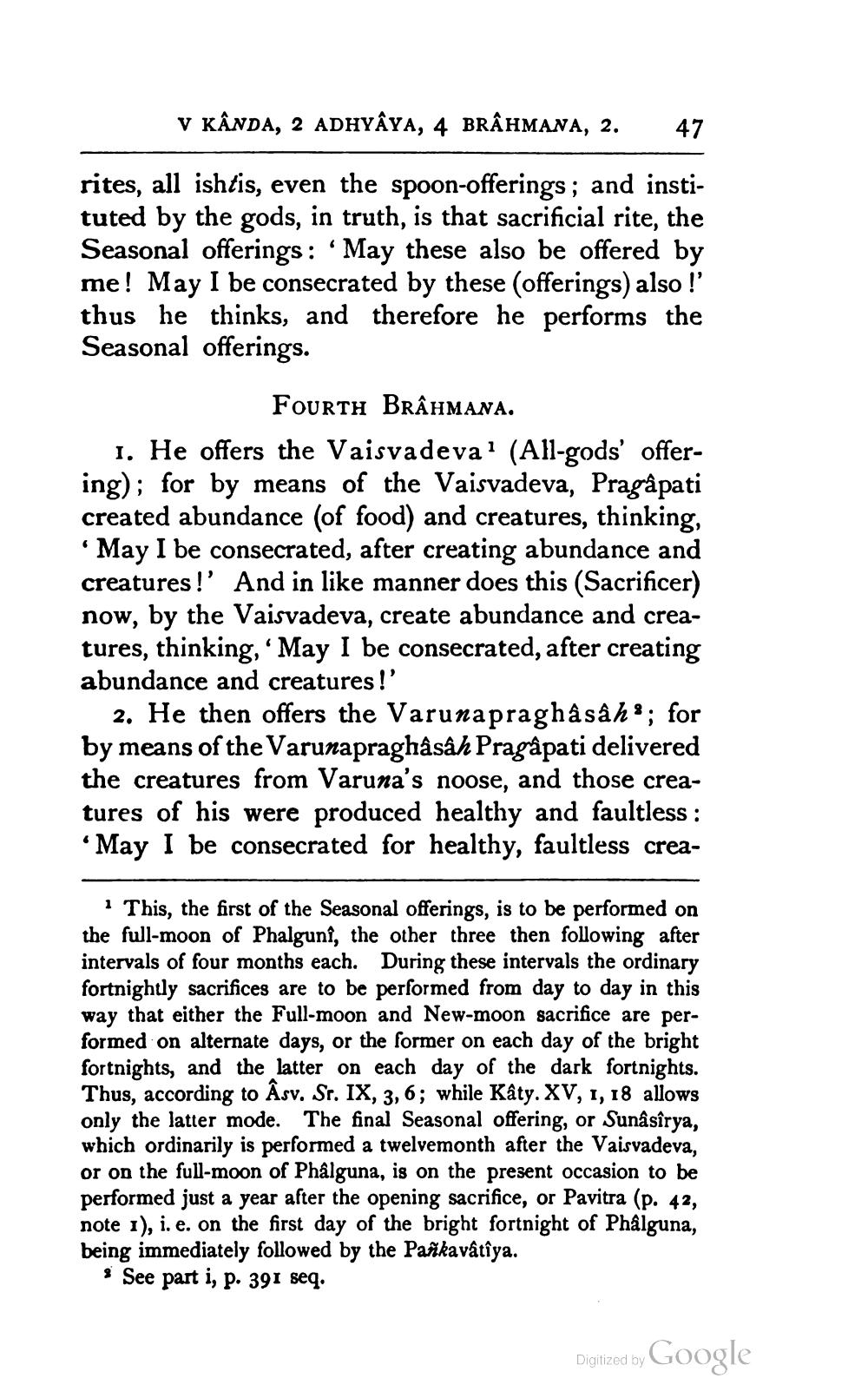________________
V KANDA, 2 ADHYAYA, 4 BRAHMANA, 2. 47
rites, all ishtis, even the spoon-offerings; and instituted by the gods, in truth, is that sacrificial rite, the Seasonal offerings: May these also be offered by me! May I be consecrated by these (offerings) also !' thus he thinks, and therefore he performs the Seasonal offerings.
FOURTH BRAâhmana.
1. He offers the Vaisvadeva1 (All-gods' offering); for by means of the Vaisvadeva, Pragâpati created abundance (of food) and creatures, thinking, 'May I be consecrated, after creating abundance and creatures!' And in like manner does this (Sacrificer) now, by the Vaisvadeva, create abundance and creatures, thinking, 'May I be consecrated, after creating abundance and creatures!'
2. He then offers the Varunapraghâsâh'; for by means of the Varunapraghâsâh Pragâpati delivered the creatures from Varuna's noose, and those creatures of his were produced healthy and faultless : 'May I be consecrated for healthy, faultless crea
1 This, the first of the Seasonal offerings, is to be performed on the full-moon of Phalgunî, the other three then following after intervals of four months each. During these intervals the ordinary fortnightly sacrifices are to be performed from day to day in this way that either the Full-moon and New-moon sacrifice are performed on alternate days, or the former on each day of the bright fortnights, and the latter on each day of the dark fortnights. Thus, according to Âsv. Sr. IX, 3, 6; while Kâty. XV, 1, 18 allows only the latter mode. The final Seasonal offering, or Sunâsîrya, which ordinarily is performed a twelvemonth after the Vaisvadeva, or on the full-moon of Phâlguna, is on the present occasion to be performed just a year after the opening sacrifice, or Pavitra (p. 42, note 1), i. e. on the first day of the bright fortnight of Phâlguna, being immediately followed by the Pañkavâtîya.
See part i, p. 391 seq.
Digitized by
Google




